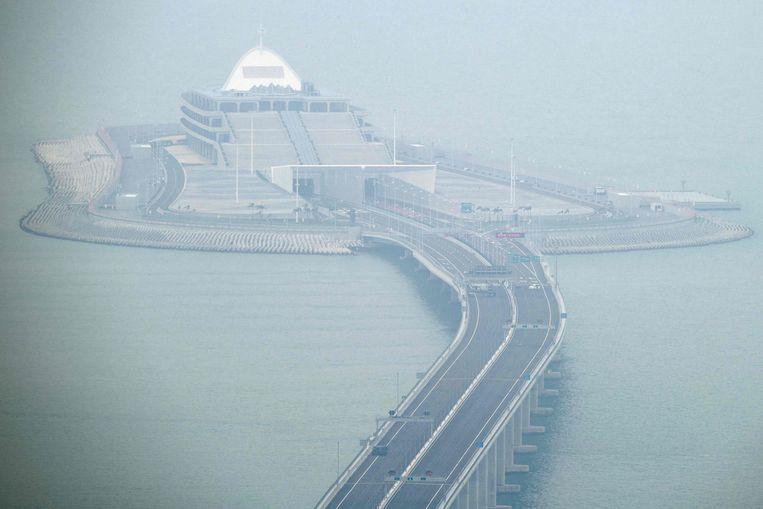Today, Chinese President Xi Jinping solemnly inaugurated the world’s longest sea bridge. The bridge connects Hong Kong and Macau with Zhuhai on the Chinese mainland. A stressful building of a total of 55 km, in which no less than 400,000 tons of steel crept and also about 17 billion euros. The bridge also has some striking features. In this way, the blood pressure and heart rate of the drivers are measured and cameras even chart their yawning behaviour.
If you want to cross the Hong Kong-Zhuhai-Macau bridge (HKZMB), you must attach it to the monitor, which measures heart rate and blood pressure. The information is forwarded to the control centre of the bridge. According to the media in Hong Kong, yawn cameras have been installed on the bridge to monitor how often the driver is yawning. If he/she does this more than three times in 20 seconds, a yaw alarm goes off at the control centre.
Not everyone will just be allowed to cross the bridge. What’s more, a ride from Hong Kong to Zhuhai is actually for the happy few. According to some sources, long-term permits are subject to strict conditions, such as paying heavy taxes in China or donating large sums of money to charities in Guangdong. Politicians are also given priority. Furthermore, permits would be allocated by lot. Whoever falls next to it can still only use the shuttle bus along the kilometre-long route that runs over three cable-stayed bridges and through a submarine tunnel. After all, public transportation is also barred.
The bridge is therefore very controversial. In Hong Kong many residents complain that the bridge is financed with their tax money, but that it is not open to the community at all. She even thinks that politician Eddie Chu is completely unnecessary, because traffic will drop significantly by 2030, once a second, similar bridge between Shenzhen (on the border with Hong Kong) and Zhongshan (just north of Zhuhai) will be finished.
And then there is the pressing problem whether the cars have to drive left or right of the road? In Hong Kong and Macau, drivers drive to the left of the track, as in the United Kingdom and Australia. But on the Chinese mainland the rule is right. Little surprisingly, it was decided to drive right, because the bridge is officially regarded as belonging to the Chinese mainland. Hong Kong drivers will therefore have to comply with the Chinese legislation on the bridge. Before they enter the bridge, they have to stop at a specially planned transition point and change lanes.
Critics argue that the entire billions project is primarily intended to integrate Hong Kong more in China. Both Hong Kong and Macau are both part of the People’s Republic of China, but as a Special Administrative Region, with its own government, economic system and legislation. The sea bridge would mainly be a symbol to bring the two relatively autonomous areas more firmly under Chinese control.
Source: The Guardian
